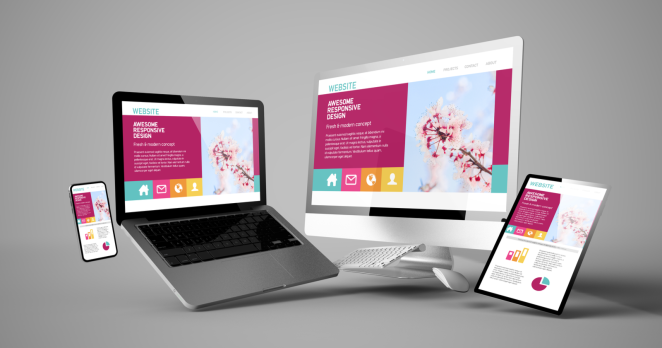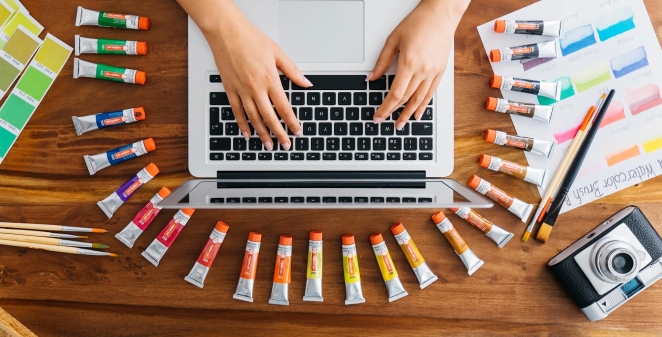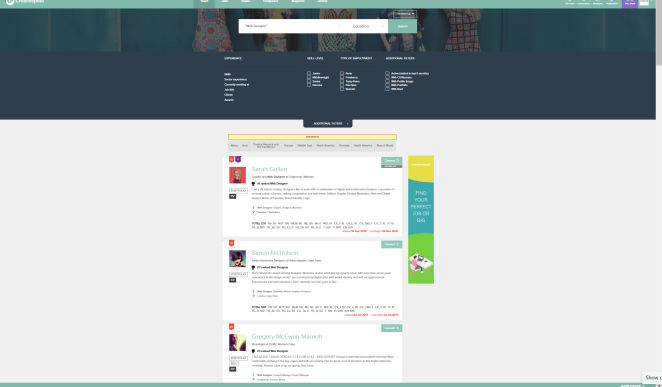Creating a website is a big deal – it’s putting a piece of yourself or your business online, in the hope of growing your audience. We all want to be sure that our sites create the best first impression possible – especially since data has shown that a huge 75% of your online presence’s credibility comes from the quality of its web design.
Your website is the first — and sometimes the only thing — your potential customers see when they are searching for your products or services. What type of first impression are they getting when they visit your website? Does your website properly represent your business and make potential customers want to call you, or make them want to look elsewhere?
Without the necessary skills, knowledge and experience that professional web designers bring to the table, a free do-it-yourself website can be disastrous for your business and your brand — eventually costing you thousands of dollars in lost business. Anyone who has ever tried to fix something in their homes knows that there is always a cost to hiring a professional, and a cost to not hiring one.
Many small business owners believe that they can handle the daunting task of designing and maintaining a website. But many don’t realize that web design is a complicated, full-time job that is best left to professionals. Instead of spending weeks putting together your website, wouldn’t you rather spend time growing your business? Hiring an experienced web designer to create a professional, functional and user-friendly website for your business can give you a leg up on your competitors.
But if you’re in the market for top web designers to help put a public face to your site, where should you be looking and what should you be looking for?
What is a web designer?

A Web Designer creates and oversees all visual aspects of websites. Web Designers plan, ideate, create, and build websites and web pages, many of which combine a number of visual elements including text, photos, graphics, and video clips. A Web Designer also oversees the design and layout, which can mean working on a brand new website or updating existing pages.
Before creating those designs, Web Designers focus on liaising with clients and stakeholders to develop a clear idea of the goals and needs of a website. They then begin creating websites, designs, and layouts that present a company in a positive way to a target audience.
A Web Designer has the ability to oversee visual aspects including color, layout, and font while also prioritizing the user by ensuring smooth usability. Likely working for a digital design agency that services clients, or within the in-house development, marketing or design team of a larger company, a Web Designer will spend time designing websites, optimizing websites for speed and ease of use, conducting testing, collaborating with developers to ensure proper integration, and working with marketing and research teams to incorporate brand elements.
What to look for in a web designer?

If you want a high-quality website for your project and you don’t want to spend dozens or hundreds of hours learning design, your best bet is to hire a web designer. Unfortunately, anyone can claim to be a web designer but not everyone can deliver results.
There are several questions that all brands and agencies should be asking potential web designers and themselves during the hiring process.
What type of web designer are you?
There are three types of web designers. The type you probably think of first is a graphic designer, who creates the graphic layout of a website. There are also UX designers, who focus on how customers experience your brand and products, and UI designers, who focus on how customers interact with the technology of your site. Many web designers have skills in more than one of these areas.
What’s the scope of the project?
You should know when you want to release the website and how much time your designer will have to work on it. You may also want to consider hiring a permanent web designer or looking for a web designer who offers an ongoing maintenance package, so you don’t have to deal with site updates yourself.
What do previous customers have to say?
You can find these clients by going to a designer’s portfolio and looking at the reviews and testimonials. This often lets you see not just the names of websites the designer worked on, but also the names of the people who acted as the point of contact for each job.
This is key because you want to talk to someone who worked with the designer directly. In some cases, the person’s name will be listed with a link. More often, however, you’ll need to find information about that person through either Google or LinkedIn.
Once you’ve found the contact information for the person who reviewed your potential designer, you can reach out with a quick email. Ask about are how easy the web designer was to work with, if they responded to comments and requests in a timely manner, and if they produced the website they promised in the timeframe they promised.
What does your portfolio look like?
There are several things to consider as you scroll through a potential candidate’s portfolio:
- Services. Most designers sell one-time website building packages. Some may also offer ongoing website maintenance services, which can be a great investment if you don’t have the time or the skills to maintain your site yourself.
- Skills. A good web designer will be comfortable with three aspects of design: graphic design to create appealing visuals, HTML to create the structure of web pages, and CSS to give web pages a stylized look.
- Design. The portfolio itself is a demonstration of the designer’s work. If the site they’ve built to represent themselves is poorly organized, uses an unpleasant color combination, or isn’t mobile friendly, the websites they make for clients probably aren’t much better.
- Previous work. Someone can have ten years of experience and still not have the right skills to work on your website, so it’s important to look at what they’ve created in the past. Make sure they’ve created sites with similar functionality to what you want. You may also want to look for web designers who have worked with other businesses in your industry, as these designers will have a better understanding of what you need to get out of your website.
Where to look for web designers?

Of course, the first place to look should always be your current team. Next, check your existing circle of contacts. If your immediate circle isn’t turning up any obvious candidates, the next logical step is to take the search online.
Ask other entrepreneurs in your industry who had their websites designed. The best way to do this is to ask friends directly because they’ll be more likely to give you detailed information about what working with their designer was like, but you can also ask on social media.
Also, look at the websites you like the look of. Some websites list the designer at the bottom of every page, so if you see a website you like, you might be able to figure out who designed it by scrolling down.
LinkedIn is always an option too, but it is a vast and cavernous resource. Creativepool, meanwhile, is focused specifically on creative professionals and there are hundreds of web designers within our ranks ready and waiting to meet you.
Writing a job description
Of course, if you’re going to be casting the net our for a web designer, you’ll need to write a decent job description. Start by figuring out how much you can afford to pay them.
The average base pay for a web designer is just under £30,000 per year according to Glass Door. Those with more experience and a proven track record of success in this area can also command even higher salaries.
Be specific about your expectations. While it's important to hire the best person for the job, it's equally important to be clear about what your company needs from that person.
With your priorities and skillset in mind, it's time to create a job description. This should include a clear overview of what the role entails and any specific requirements or qualifications you have in mind.
You may also want to note any benefits that come with the position and let candidates know what you can offer. This will help you attract the right web designers for the job.
Using Creativepool

Looking to hire a web designer? Creativepool has thousands of super talented individuals waiting to bring your static projects to moving life.
There are 3 ways for you to find a motion graphics designer on Creativepool.
1. Search and Contact
Want greater control of who you work with and the process behind it? Searching for talent directly and then handpicking who you would like to work is a great way to be proactive in your talent hunting.
Simply search for web designers and browse through the results. You will be able to look through projects, CVs/Resumes of the talent listed to make an informed decision on your next hire.
On Creativepool we use a series of indicators to rank our members based on job title. Looking through the top 25 ranked motion graphics designers is also a powerful and quick way to view the best in talent on the platform.
Once you have found someone whose style and experience works for you, contact them directly by clicking on the message tab. Searching is ideal if you have a very specific idea on who it is that you would like to be working with.
2. Post a studiogig
Looking for a freelance web designer? The quickest way to find available talent is to advertise your brief. With us, briefs for individuals are called studiogigs.
Posting your role is formulated to be quick and easy and once you have posted your role, we get busy behind the scenes selecting the best talent to send out your brief to and then post the role on the jobs board. Once you have advertised your brief then just relax and wait for applicants to come to you directly!
3. Post a job
If you are looking for a permanent web designer, then advertising a web designer job is the way for you to attract talent. The process is identical to posting a studiogig.
Once you have posted your role we will check the details of the adverts, send out job alerts to our community that best match your criteria and post on the jobs board. Like studiogigs applicants will apply to you direct.
Whether posting a job or a studiogig or searching for talent you are in control on who you hire. You are under no obligation to choose any of the applicants, and you negotiate with them directly on rates.
If you need any help on your talent hunt. You can chat with us or send us a message. We'd be happy to help.






